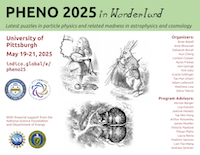Speaker
Description
The recent demonstration of laser excitation of the 8 eV isomeric state of thorium-229 is a significant step towards a nuclear clock. The low excitation energy likely results from a cancellation between the contributions of the electromagnetic and strong forces. Physics beyond the Standard Model could disrupt this cancellation, highlighting nuclear clocks' sensitivity to new physics.
It is challenging to accurately predict the different contributions to nuclear transition energies and therefore of the sensitivity of a nuclear clock to new physics. We improve upon previous sensitivity estimates. First, by revisiting a classical geometric model of thorium-229. Second, by proposing a new d-wave halo model, inspired by effective field theory. For both approaches we show that poor sensitivity to new physics is unlikely. For the halo model we find that the nuclear clock's sensitivity to variations in the effective fine structure constant is enhanced by a factor of order 10,000.

